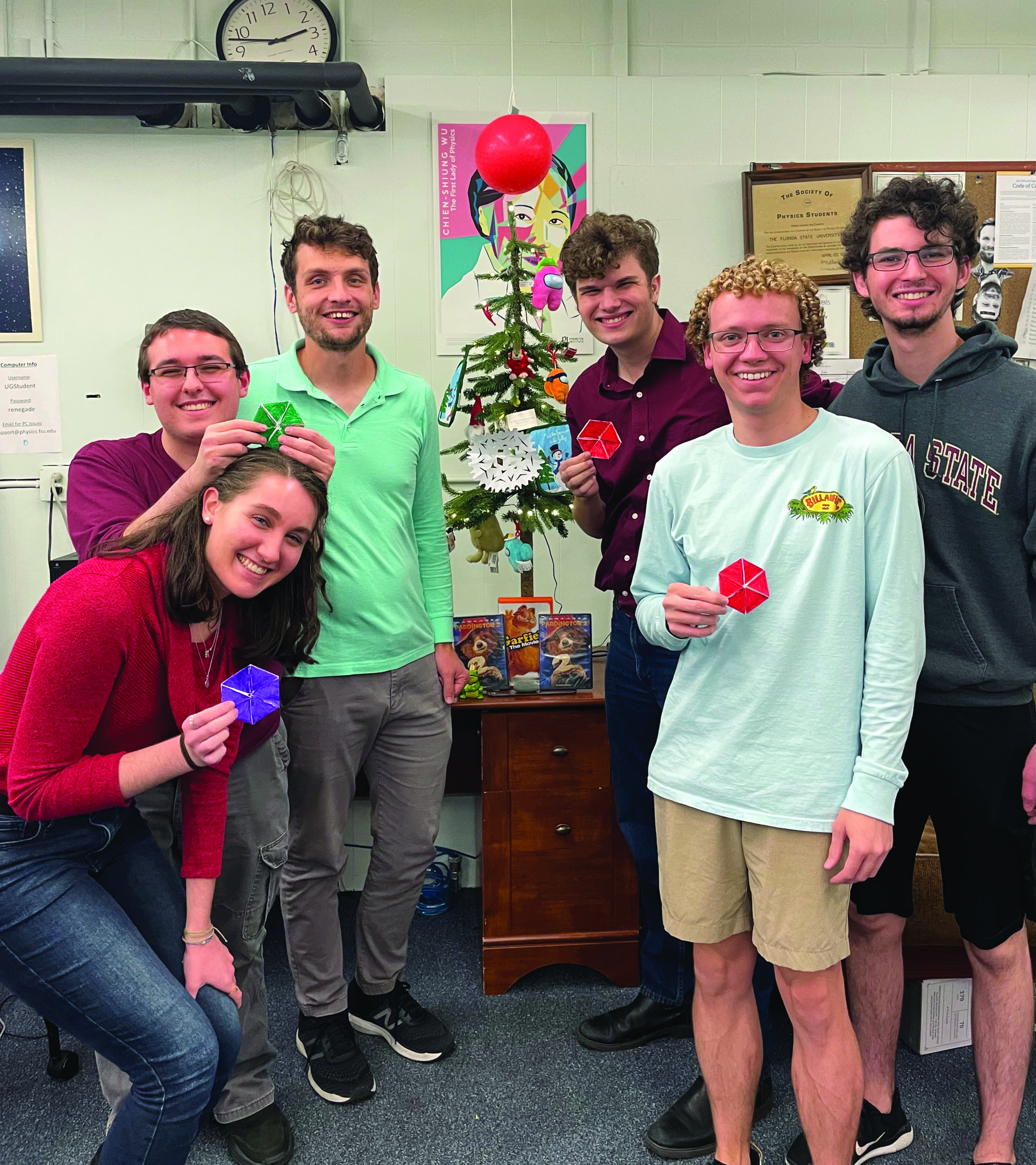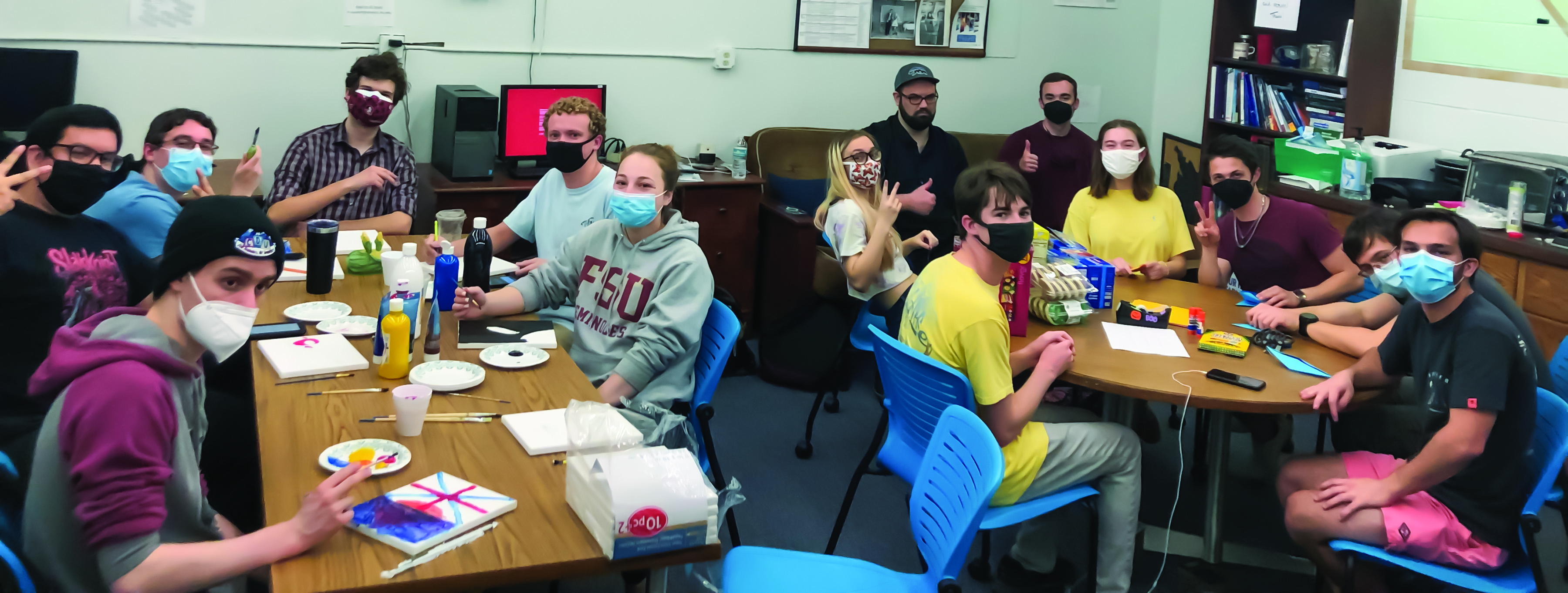Creative Outlets and Reaching New Faces
Winter
2023
SPS Chapters on Hands-on Projects
Creative Outlets and Reaching New Faces
Robert Laughlin, SPS Chapter President, Florida State University
At the start of each semester, it’s easy to feel excited about what’s in store. But as the semester progresses, this excitement often dwindles and stress and anxiety pile up. Physics majors have a heavy course load and tough exams, so we may view stress and burnout as inherent aspects of studying physics. But these feelings can harm us academically and physically, and as SPS chapters, we should do what we can to combat them. While tactics to manage and mitigate stressors through time management and study strategies are beneficial, most physics students are already aware of them. Sometimes students just need a break from heavy course loads—something SPS chapters can provide.
Last year our chapter at Florida State University (FSU) had rocky attendance, but meetings with creative activities often had double or triple the attendance of our more academically oriented meetings. When I asked some of our members why they attended specific meetings, it came down to the work they had to do. For busy students, an academic meeting felt like more work, but a creative meeting felt like a break. Probably for this reason, our most successful meetings last year were two creative activities: making hexa-flexagons and painting our research projects.
A hexaflexagon is a paper craft. When finished, it forms a flat hexagon with two visible faces. However, when you fold (or flex) a hexaflexagon in particular ways, you reveal new, previously hidden faces. Hexaflexagons are a specific type of flexagon―the category of objects that exhibit this unique property. Mathematician Arthur H. Stone discovered the first one in 1939. There are other flexagons with different shapes that reveal different numbers of hidden faces.
Aside from being an entertaining novelty, flexagons are particularly interesting to physicists because physics Nobel laureate Richard Feynman was part of the Princeton Flexagon Committee alongside mathematicians Bryant Tuckerman and John W. Tuckey. While working on the Flexagon Committee, Feynman developed a hexaflexagon diagram that became a precursor to Feynman diagrams.
At our SPS hexaflexagon meeting, we talked about hexaflexagons and showed members how to make them. Then our members decorated the different faces of their hexaflexagons as they searched for new ones. This meeting has become an annual tradition in our chapter. If you’d like to try it with your chapter, you can find many videos about hexaflexagons and how to make them online, as well as printable templates. You could even have your members make their own diagrams for how to "traverse" their hexaflexagon to reach all the hidden faces.
In another popular meeting emphasizing creativity, we painted our undergraduate research projects or the research we might want to do in the future. In addition to serving as a creative outlet, this activity highlighted our members’ research while encouraging others to get involved. We’ve also hosted meetings about origami, which some physicists study for its mechanical properties and applications in space travel.
I encourage all chapters to explore creative ways for their SPS members to express their love of physics and to incorporate such activities into their chapter’s schedule. These events are great opportunities to unwind from the stress of classes, hang out with SPS friends, and maybe even learn something fun as well.


